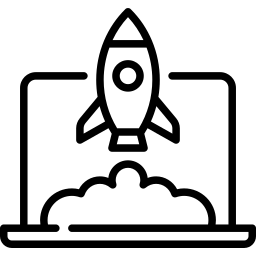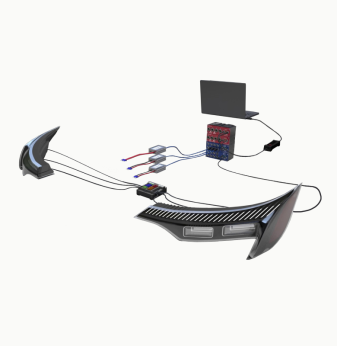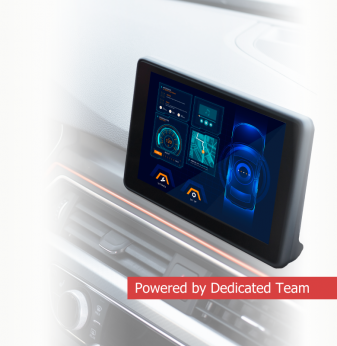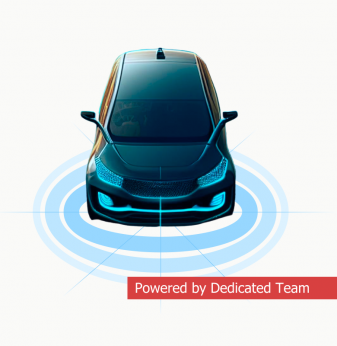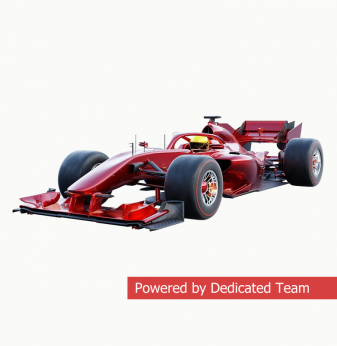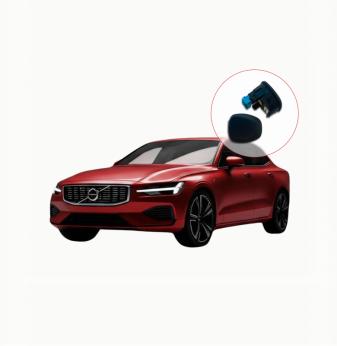Vehicle-to-Vehicle (V2V)
V2V technology forms networks between vehicles, allowing them to exchange information about their location, speed, and direction of movement. This real-time connection increases safety by alerting other drivers to potential collisions, obstacles, breakdowns, and other hazards.
We offer connected car services that involve the design of onboard automotive communication units. Powered with V2V technology, the units can alert other drivers about external issues with their cars, such as damaged headlights or flat tyres.
The key aspect of the V2V solution is the integration of the in-vehicle infotainment (IVI) system module with the car's camera, which enables the module to recognise registration plates. If both cars' registration plates are in the database, the notifying car can alert another car of external damage through an encoded message sent through the stereo.






